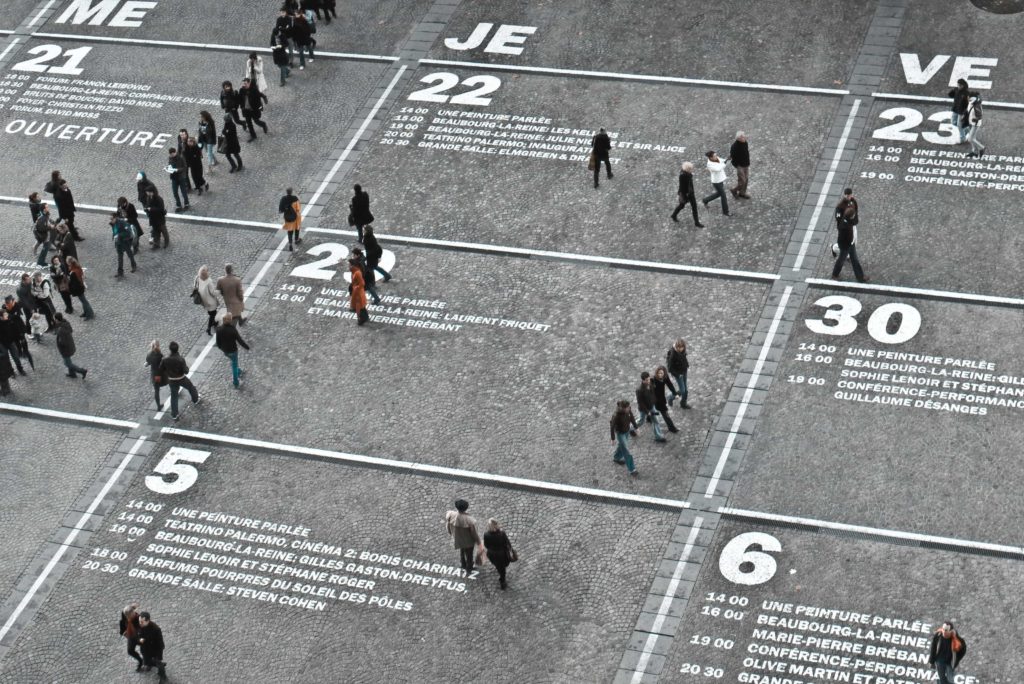
How Language Influences The Way You See Colors, Space, and Time
One day I was in my Kiswahili language learning course when my instructor taught us something profound about how language influences how we see other people. In the course, he taught us how a noun class identifier that was supposed to denote “things” was actually a way to denote a disabled person.
Here, I’ll walk you through the example so this makes sense:
So, in my professor’s example, the word kiti translated to “chair”, where the “ki” is the object signifier, denoting that the speaker is referring to a thing.
The word Mtoto, on the other hand, translates to “child”, as the “m” is a noun signifier, indicating that the speaker is referring to a person.
To describe a blind person, however, the word in the language is kipofu.
In this example, the blind person was actually referred to as an object, by using the signifier “ki” instead of an “m” for a person.
The Power of Language:
The professor taught that the words used to refer to things and people revealed cultural attitudes around them — in that using this noun class to denote disabled persons, there was an attitude that disabled people were seen as things and not people.
The language has recently been updated to fit modern cultural attitudes, so now there is a more appropriate term to describe a blind person: Mpofu.
Whether people decide to adopt this change in the language is another story. Regardless, there is no denying how profound language can be to shape our beliefs, attitudes, and worldviews.
Does Your Language Determine Your Perception of The World?
Surprisingly, yes, though the effects are often subtle.
The idea of linguistic relativity (or linguistic determinism), that the language(s) we speak determines our thoughts and actions, was made popular by Benjamin Lee Whorf in the 1950’s.
While the strict Whorfian hypothesis has long been abandoned by researchers, the notion that language affects thought is around to stay—largely because there is some truth behind it.
Let’s look at how language changes our perception of color, space, and time.
How a Language Affects the Way You See Color
Although our language does not directly affect the way we see color, it does affect how we think (and talk) about color.
“Our perception of color is not only related to the colors we see, but to the words that we give colors!”
Watch this video below to learn more about this phenomenon:
There are universal tendencies in color naming, but languages vary in the number of basic color terms like black, white, red or yellow. A basic color term is a single word that cannot be broken down into separate meanings.
For instance, ‘green’ is a basic color term, but ‘lime green’ is not.
Are Basic Colors Universal?
English has eleven basic color terms, but some languages have only three basic color terms.
Languages with three basic color terms all share the same colors: black, white, and red.
This doesn’t mean that speakers of these languages can’t distinguish other colors outside of these three categories, just that they might use modifiers (as in ‘lime green’) or special, infrequently-used color terms to refer to these colors.
While the number of color terms varies cross-linguistically, researchers have found that languages tend to use the same “privileged” points in the color space to name color categories.
At least with respect to color, there might be more similarities than differences between the world’s languages.
How Language Alters The Way You See the Space Around You
A more striking example of how language affects human cognition can be found in linguistic research on spatial relationships. Spatial relationships encode how an object is located in space in relation to some other object.
Like with color terms, we use spatial relationships every day.
When an English speaker says “the ball is to the left of the dog”, they employ a relative frame of reference, meaning the statement is only true when spoken from a certain vantage point.
If the ball and dog don’t move, but the speaker turns 180 degrees, then the speaker would declare that the ball is now to the right of the dog.
What an English speaker says about a spatial relationship changes based on where that speaker is.
This must explain the commonly used frustrations when giving directions,
“No, I meant my right, not your right!”
Languages That View Spatial Referencing Differently Than English
Not every language employs this frame of reference.
A speaker of Guugu Yimithirr (an Australian Aboriginal language spoken in Far North Queensland) would describe the position of the ball and dog in a completely different way, using an absolute reference frame. Absolute frames of reference usually employ the cardinal directions to talk about spatial relationships.
In languages that use absolute frames, the ball is north of the dog, not to the left or right.
Crucially, the ball is always north of the dog, regardless of the position of the speaker or listener. English speakers talk about cardinal directions as well, but in a limited context and not as the primary way of encoding spatial relationships.
In languages like Guugu Yimithirr, absolute reference frames are the main (or only) way of talking about location in space.
How Absolute-Framed Language Affects Perception
As you might expect, speakers of absolute-framed languages are much more aware of the cardinal directions than others. This study asked individuals from two distinct ethnolinguistic groups to identify the cardinal directions without a compass.
People from Pormpuraaw (Cape York Peninsula), a community in which several Australian Aboriginal languages are spoken, were all able to correctly identify the cardinal directions with only 10º of error.
Speakers of American English performed the same task poorly: only 36% correctly identified the cardinal directions, 36% were 45º-90º off compass, and 28% failed the task entirely.
This suggests that the language we speak can determine what we think is—or isn’t—worthy of our attention.
How Language Shapes The Way You View Time

Languages often metaphorically extend spatial relationships to talk about time.
Examples of this in English include: looking forward to x, behind schedule, an artist ahead of their time. As with spatial relationships, languages vary greatly in their encoding of temporal relationships.
Mandarin Chinese speakers frequently employ vertical metaphors to talk about time. While English has some vertical time metaphors (“the upcoming debate”), Mandarin Chinese uses this type of temporal relationship metaphor more robustly.
Earlier events (those closer to the past) are ‘up’, and later events that are closer to the future are ‘down’.
The Language You Speak Shapes How You View Timelines
When asked to create a timeline using cards with pictures, monolingual English speakers all arranged events from left-to-right, with the earliest events on the left, and the latest events on the right.
Speakers of the Australian Aboriginal language Kuuk Thaayorre (spoken in Pormpuraaw) tend to arrange events on a timeline from east to west, with the earliest events in the east.
Despite English speakers’ behavior, there are no left-to-right time metaphors in English, and despite Kuuk Thaayorre speakers’ behavior, there are no east-to-west time metaphors in Kuuk Thaayorre.
Instead, speakers of both languages seem to take the way they think about space and adapt it to time as well. That is, many (unrelated) languages employ spatial language to think about time.
See The World in a Different Way Through a New Language
Most of the language-driven differences in human cognition serve to highlight how similar we are: speakers of all languages think about the same things, but may do so differently.
The language(s) we speak don’t prohibit us from thinking in certain ways, but instead, encourage us to develop habits of thinking about and relating to our world in new ways. Cross-linguistic differences teach us about the limits of the human mind, and that every language has something unique to teach us about all of human language.
Want to see the world in a new and exciting way? Unlock a perspective you can only get through picking up a new language.
Step outside of your comfort zone while staying in the comfort of your own learning environment when you choose to learn a language with Pimsleur.

6 Comments for "How Language Shapes the Way We Think and See the World"